Cyclingnews Verdict
The Saris Modular Hitch System (MHS) promises to take the functionality of a rooftop rack system and move it to the rear hitch for ease of use - it's a premium hitch rack system
Pros
- +
Modular system is easier to store
- +
Incredibly easy assembly
- +
Includes multiple lock cores for matching keys with future pieces
- +
Tilts below vertical for vehicle access
Cons
- -
Heavy
- -
Expensive
- -
Security wrench required for adding bike trays
- -
Add-on tray isn't as easy
You can trust Cyclingnews
Even the most diehard cyclist will sometimes have the need to transport a bike by car. There are a variety of ways to handle that need depending on your individual situation. We've covered products across the whole range in our buyer's guide about the best bike racks for cars but two of the most popular premium offerings are hitch-based racks and roof racks.
Roof racks tend to be the more modular approach. Once you've got roof rails you can add options for luggage or different types of bikes depending on your needs. American brand Saris believes there's an opportunity to introduce that same system-based approach to a hitch rack.
Now that we've spent some time with the new-to-market Saris Modular Hitch System, we are ready to talk about all the details.
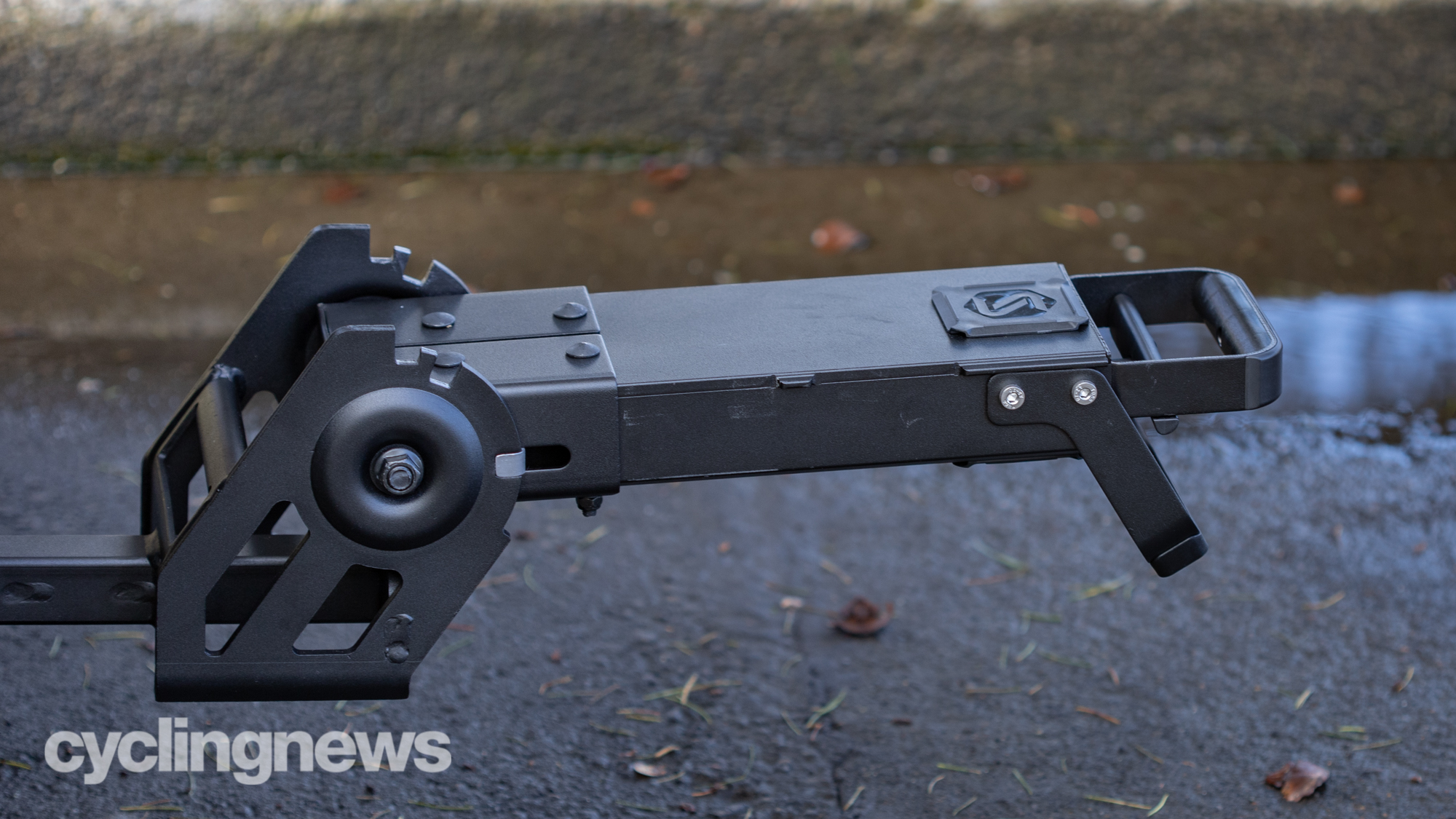
Design and aesthetics
The easiest way to understand the design innovation of the Saris Modular Hitch system is to think about what a roof rack system offers. Roof racks are not bike centric. They offer options for sports of all kinds, luggage, and lots of different bike options. With a roof rack, you start with a set of crossbars and build from there.
The Saris MHS system is similar but it starts with a base hitch. Right now, the base-hitch systems are all described in terms of bikes carried but that's not actually the best way to think of them. Instead, consider the design of each as a set number of mounting points. Each base hitch includes a number of inside mounting places as well as a single add-on mounting spot with a lower load weight and a different mount style.
If you've got a 1-1/4in hitch receiver that limits the options available to you. For that situation, you'll need to choose the MHS 1+1 Base Universal Hitch. There's a single standard mounting point with a 60lb weight rating plus a single add-on mounting point with a 35lb weight rating.
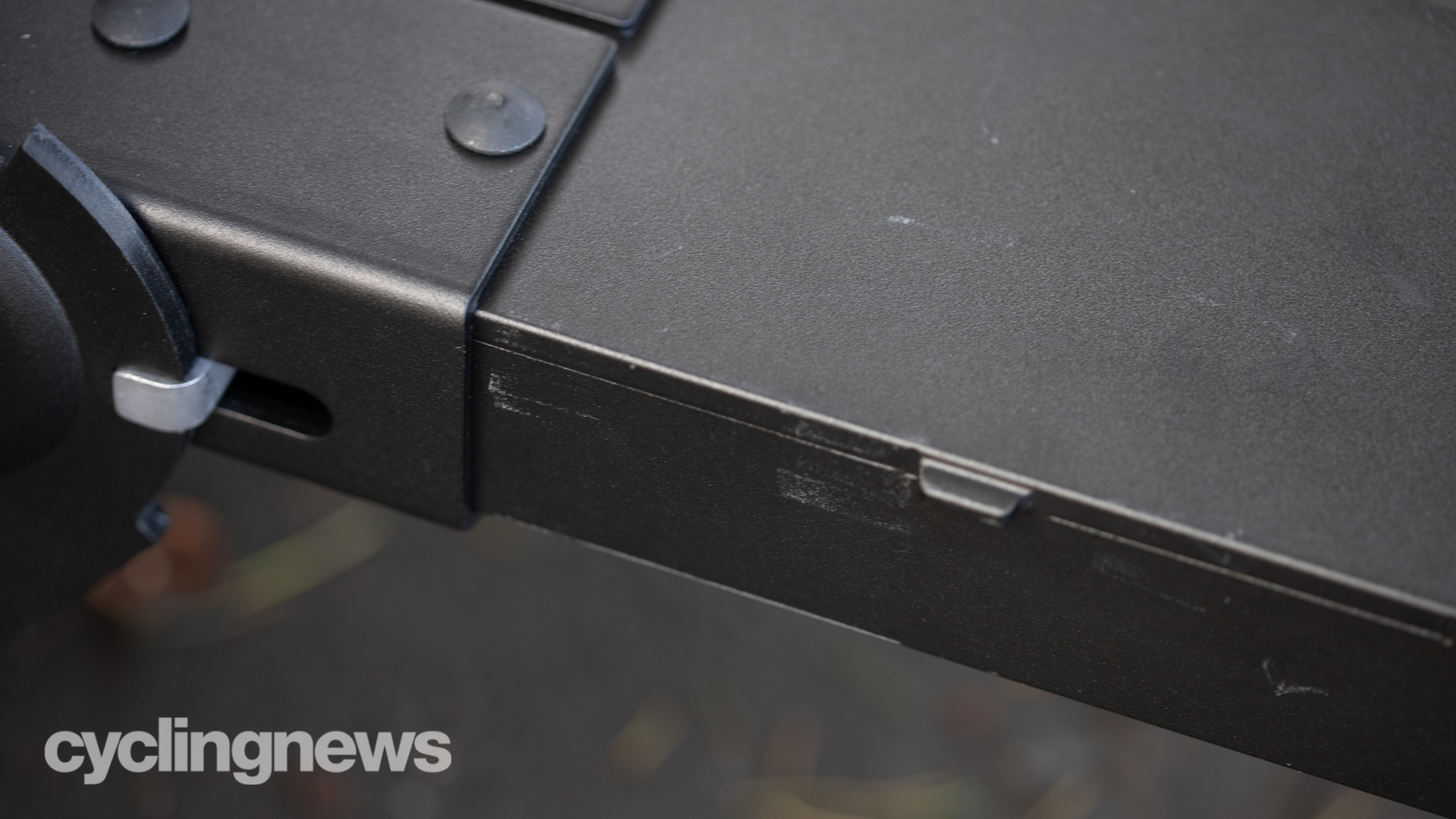

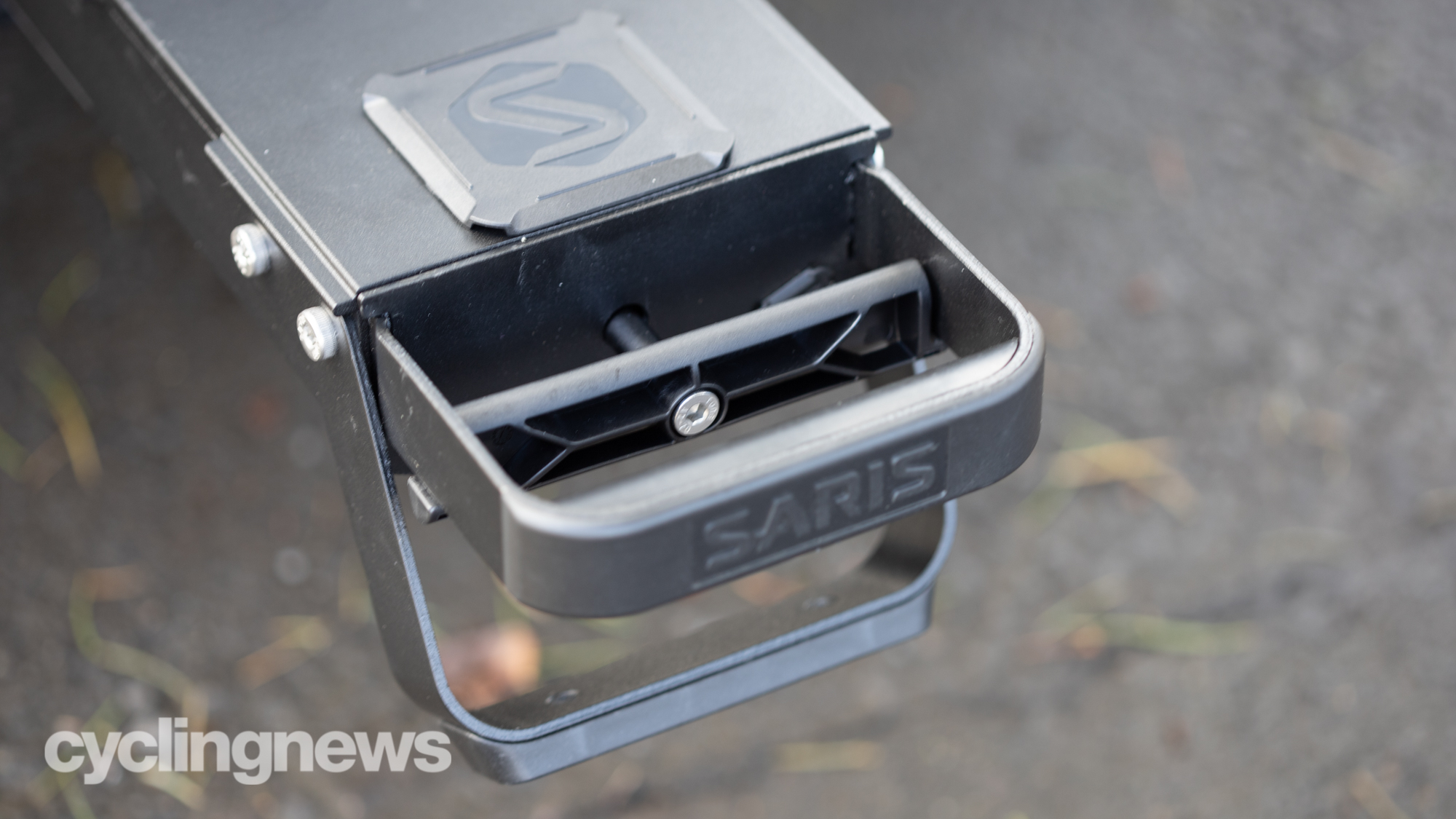
For those with a 2-inch hitch, there are also options with more mounting points. For three bikes total, there's the MHS 2+1 Base Hitch. In that configuration, you've got access to two standard 60lb mounting points and a 35lb add-on mount.
Alternatively, there's the 3+1 Base which includes a slightly different configuration. The first two mount points are 60lb then there's a third standard mounting point but it's only rated to 35lbs. It's followed by a final 35lb add-on mounting point. All of the base hitches look almost the same. The difference is in how long they are.
Once you've chosen your base hitch, you'll then need to choose what you mount to it. Right now, there are two options. For the standard mounting points select a MHS Duo 1-bike tray and for the add-on mount there is an MHS Duo 1-bike add-on tray. Functionally each tray is the same but the way they mount to the base hitch is different.
You'll need to purchase one tray per bike you'd like to carry but you don't need to purchase all of them at once, and if you start with a base hitch that's larger than the number of trays you carry that's not an issue. Saris does offer packages with trays and hitch but there's no price discount, so even from that standpoint, there's no pressure to purchase more upfront than you need.
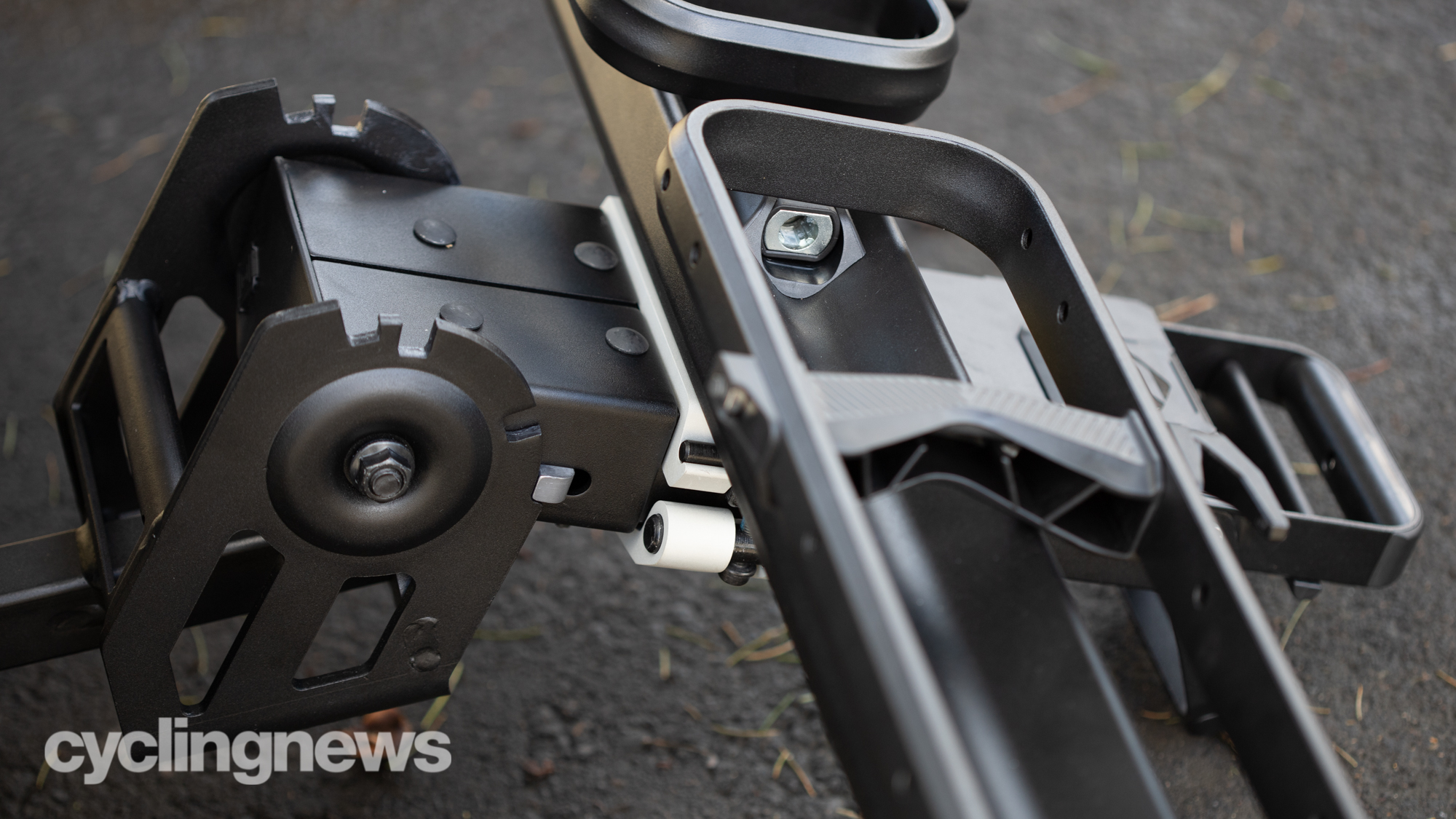
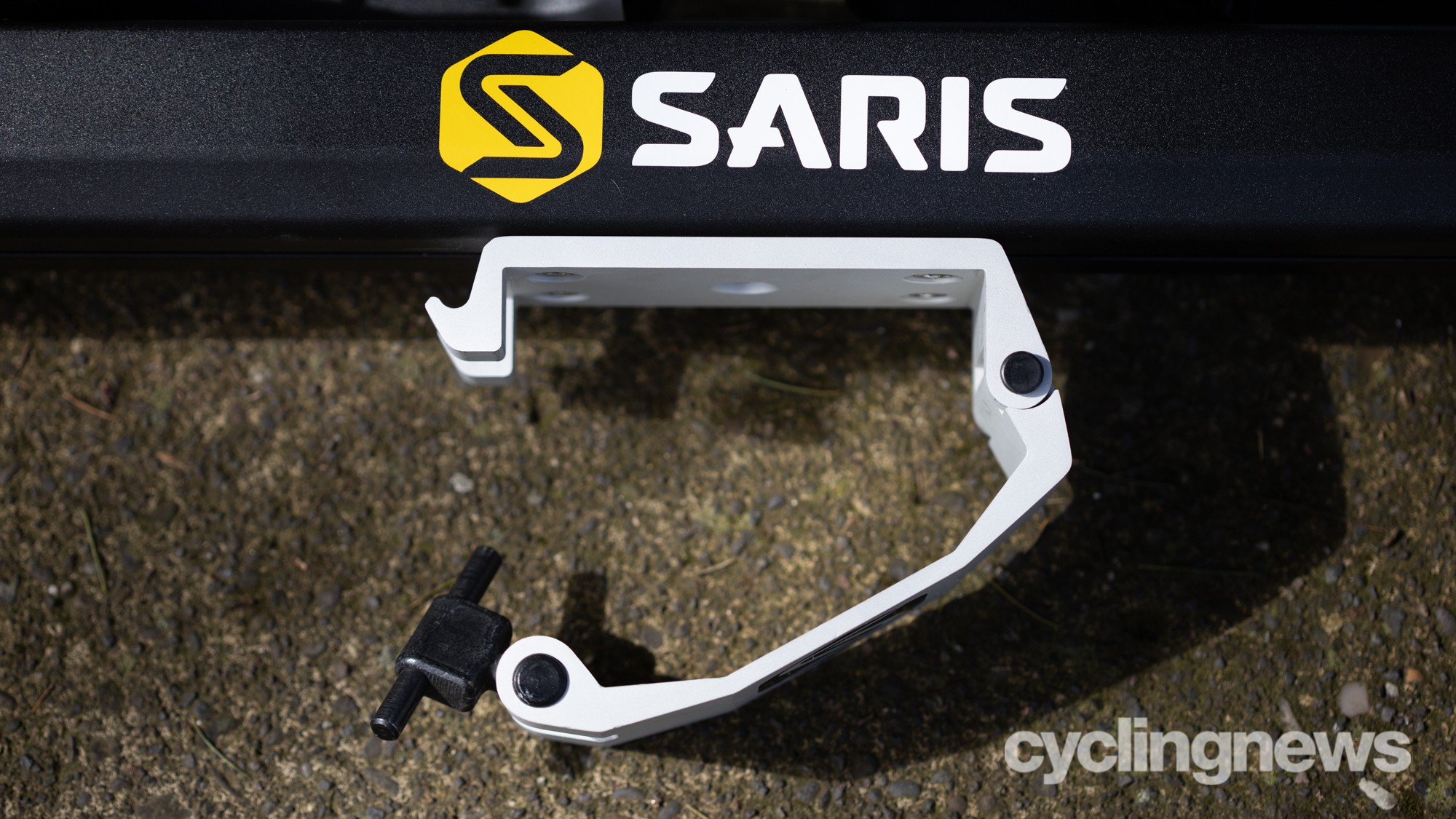
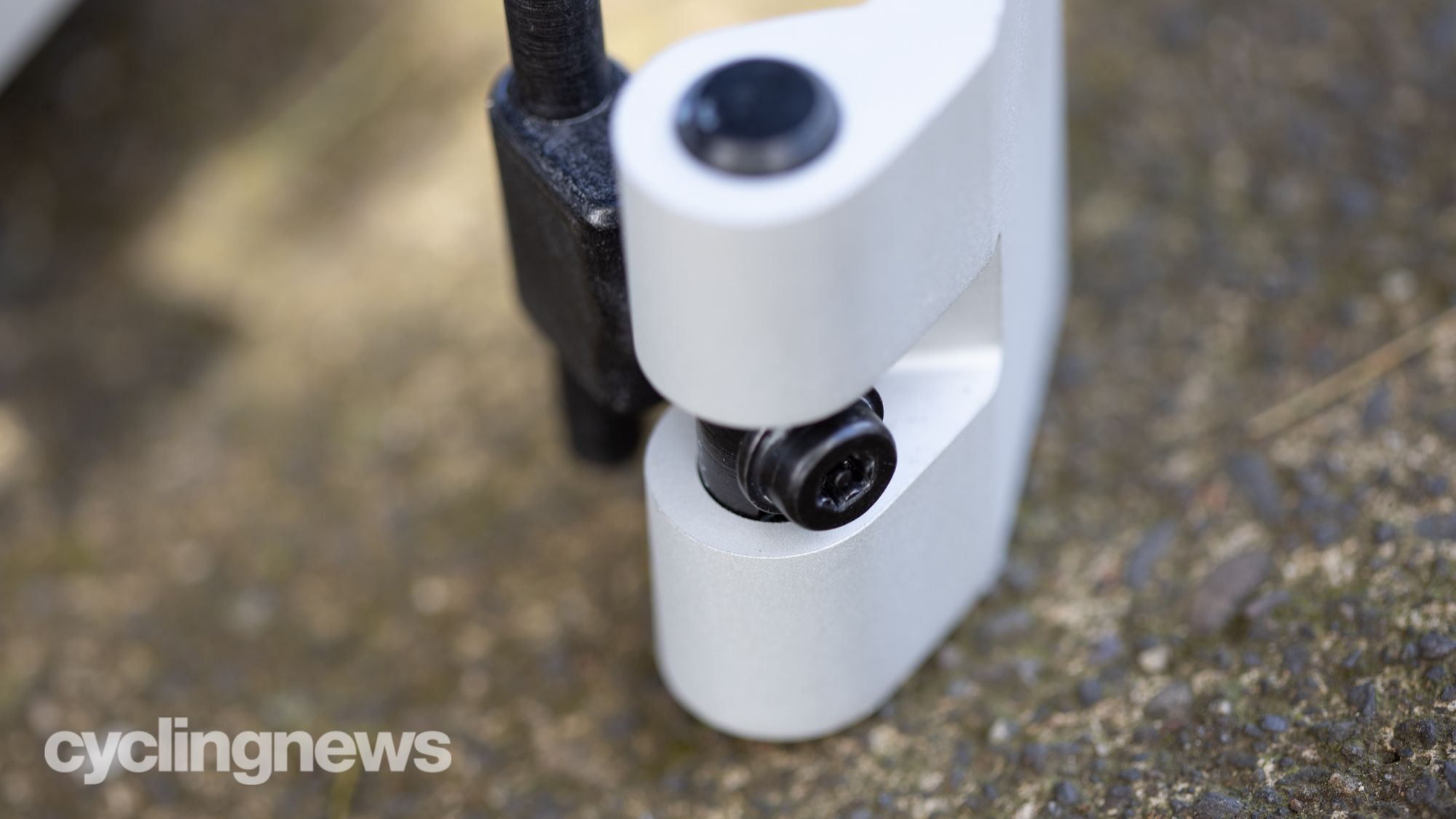
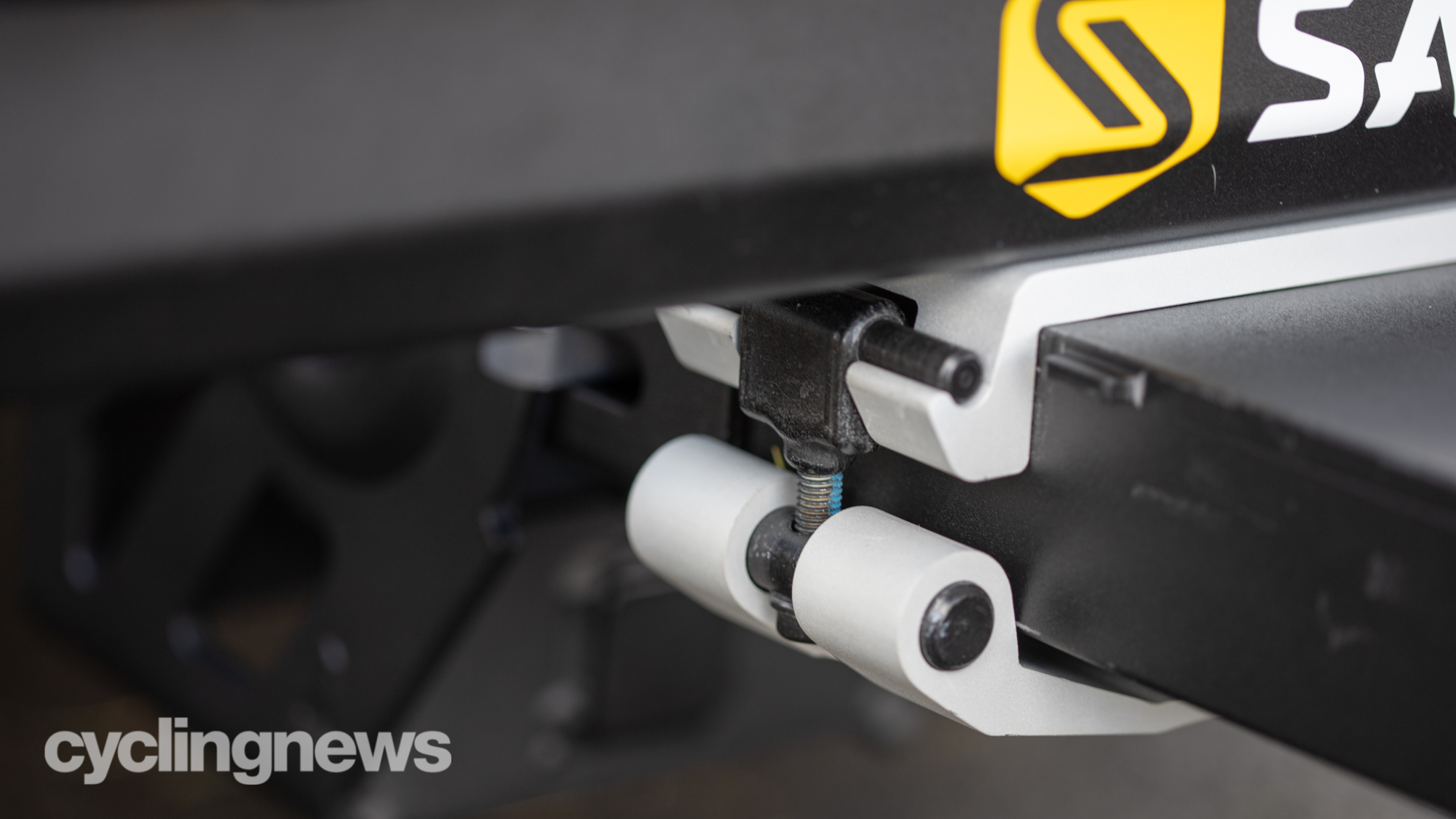

Initial assembly
Assembly of a new rack is something you've only got to do once but it's worth understanding the process. In this case, the base hitch itself comes already assembled. If you have the MHS 1+1 and you plan to use it on a 1 1/4" hitch you'll need to remove two pieces that allow it to fit with a 2" inch receiver. Otherwise, it's ready to go.
For the MHS Duo bike tray there is a little bit of assembly but the modular nature of the design keeps it incredibly minimal. The main section of the tray as well as both wheel holders comes pre-assembled. You'll need to install the aluminium clasp to the tray with four hex bolts. Once that's done the easiest thing is to put the tray on the base. Here, there are small metal tabs that direct the placement of the base, but do not interface with the clasp.
Once the tray is sitting on the base hitch you'll put together the three pieces that secure it. It's a little tricky here to get the screw situated and started in the thread, especially as it's going to be fighting against gravity. Once you do get it started, you'll need to grab the security wrench that comes with the base and tighten this down.
With that out of the way, you'll next need to install the wheel stop and wheel strap. The tray can sit on the rack in either direction but it's worth considering which way you want your bike to sit right now. If you have more than one tray you are installing, you'll want to install the pieces so that the bikes go in opposite directions. The tray, and the rear cover, each use a couple of screws and you'll need to look under the tray to line things up. The strap doesn't use any tools. Instead, it just slips into a hole and slides until it can't fall out.
I did not have a chance to use the add-on tray however the process is a little different. The tray is the same but the connection to the base comes via a pair of trusses. You'll need to remove some covers from the base and attach mounting plates then add the trusses to the tray and finally bolt the tray to the base. From there the wheel stop and strap install the same.
From the time you get the boxes situated to the time you have a working rack is maybe 15 minutes. It’s not the kind of situation where it could take 15 minutes but the first time you’ll have to figure it out, it’s actually incredibly simple. You’ll probably spend as much time getting the pieces free of the packaging as you will setting up the rack.
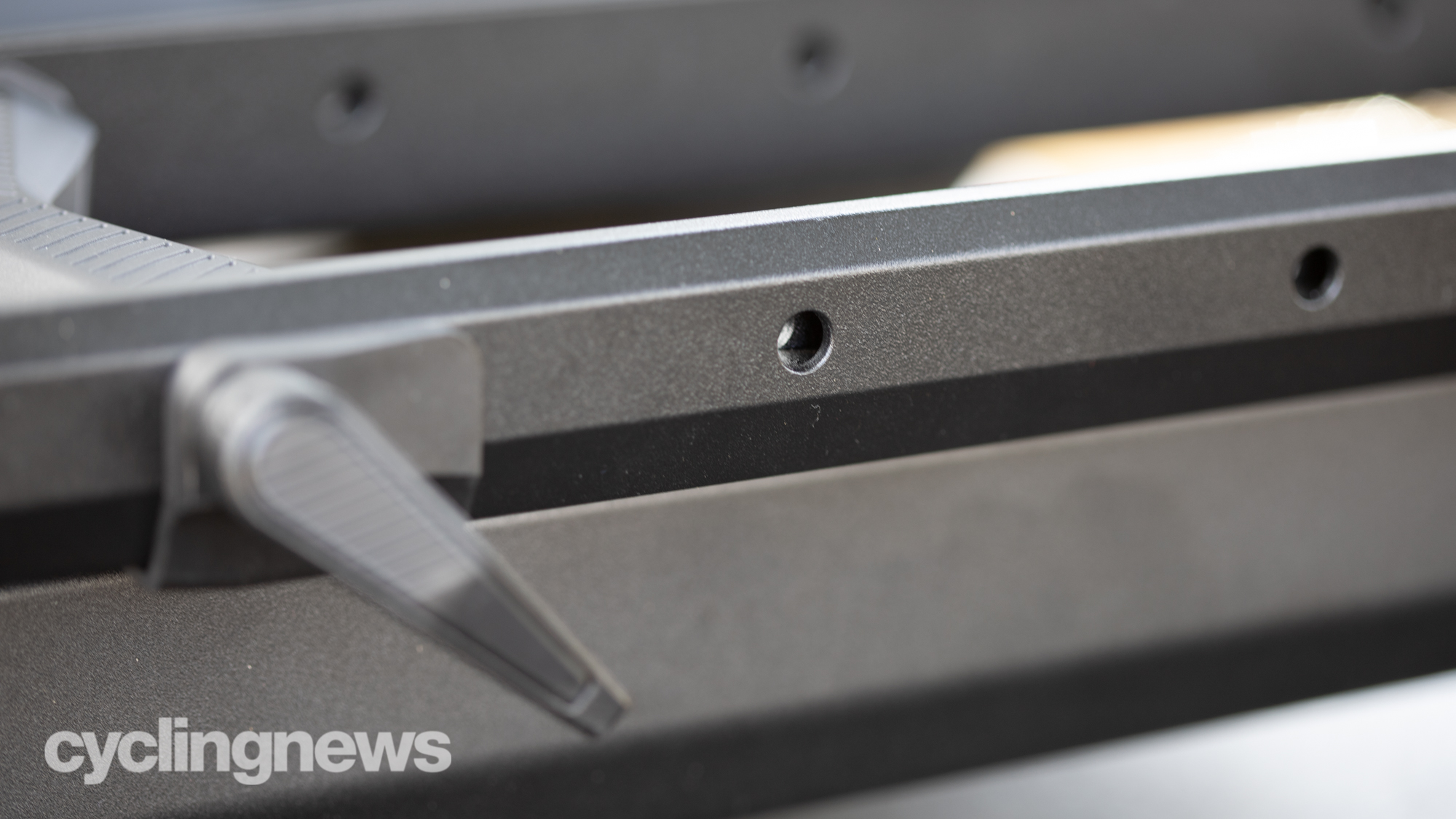
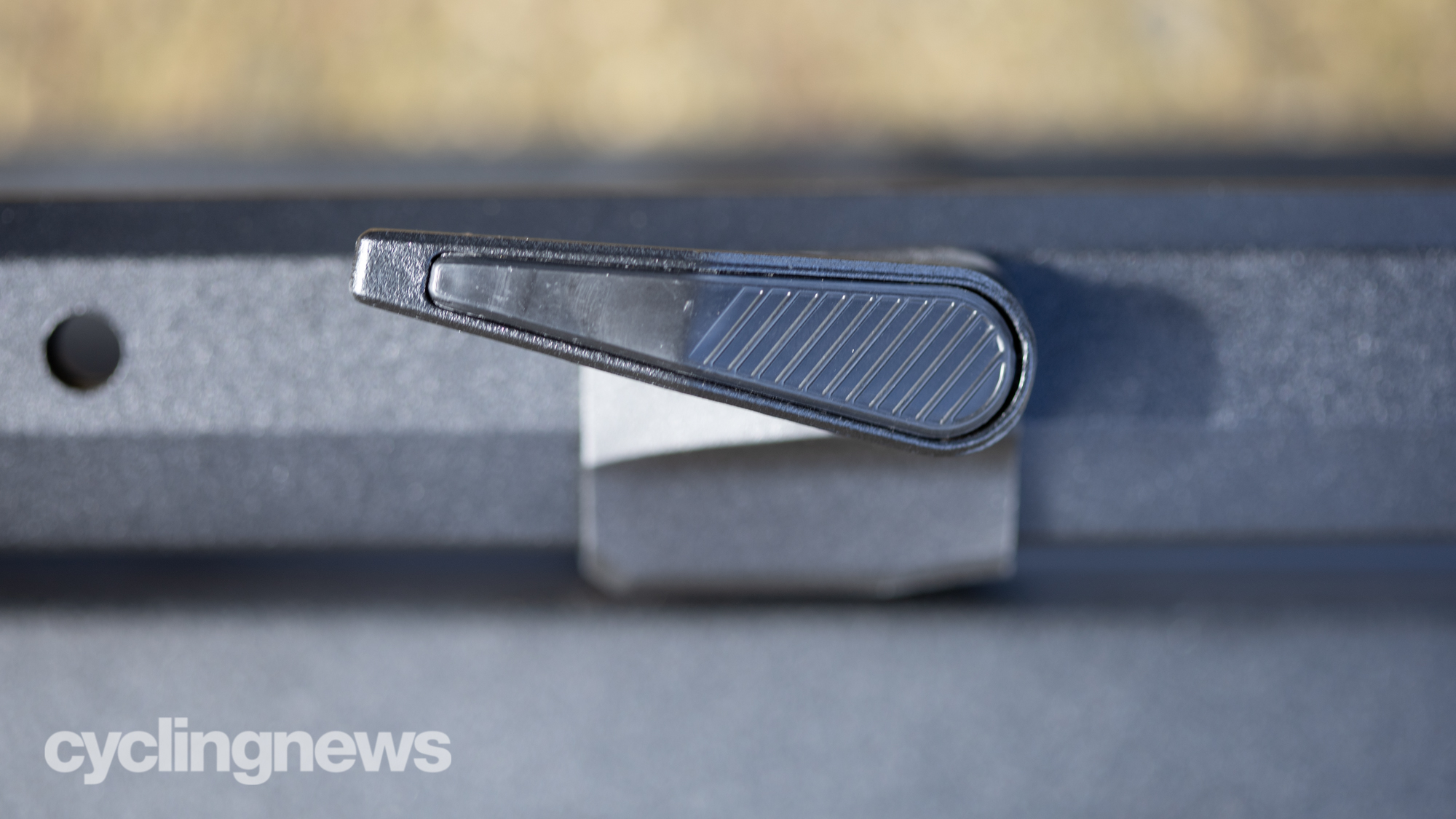
Performance
The first thing to understand with this rack is that it will not fit into a class 1 hitch. Saris doesn't specify that anywhere and it's so new that even the brand's customer service reps don't have access to definitive info covering this. It will fit a 1 1/4-inch hitch receiver but the length of the hitch limits the use to a class 2 receiver in that size, so if you have a small passenger car with only a class 1 receiver available, you'll want to look elsewhere. That's probably not a big loss though, since the MHS is a roof rack style system for cars that are too tall for a roof rack to be a good choice.
The other thing to bear in mind is that while Saris has a vision for how this system will work in future, with multiple disciplines catered for beyond just carrying bikes, the pieces that are going to flesh out that vision aren't here today, so in many ways, Saris is asking for a leap of faith. There is a promise of more features down the road but we have to look at what is available right now. At the moment you've got a base hitch and what is essentially one style of bike tray, so that's what I was able to test.
For the rack aficionados out there, the way this rack works might be recognisable. 1up popularized this style of bike retention and now that the patent has expired other brands, including Saris and Thule, are coming to market with similar designs. There's an arm on each end of the platform that comes up and pushes against each tyre. The arms use a ratcheting mechanism so they can tighten, but to open them, you'll need to press a release. You can adjust the height the arms contact the tyre for different sized wheels.
The Saris implementation is very good. One thing they've done is take a very risk-averse, perhaps overly so, stance and they've added extra retention measures. The tyre block and wheel retention strap aren't necessary to keep the bike secure. Thule and 1up both lack them but Saris is including them, just in case. The wheel block helps make sure not only that the bike is secure but also that there's only one place you can position the bike.

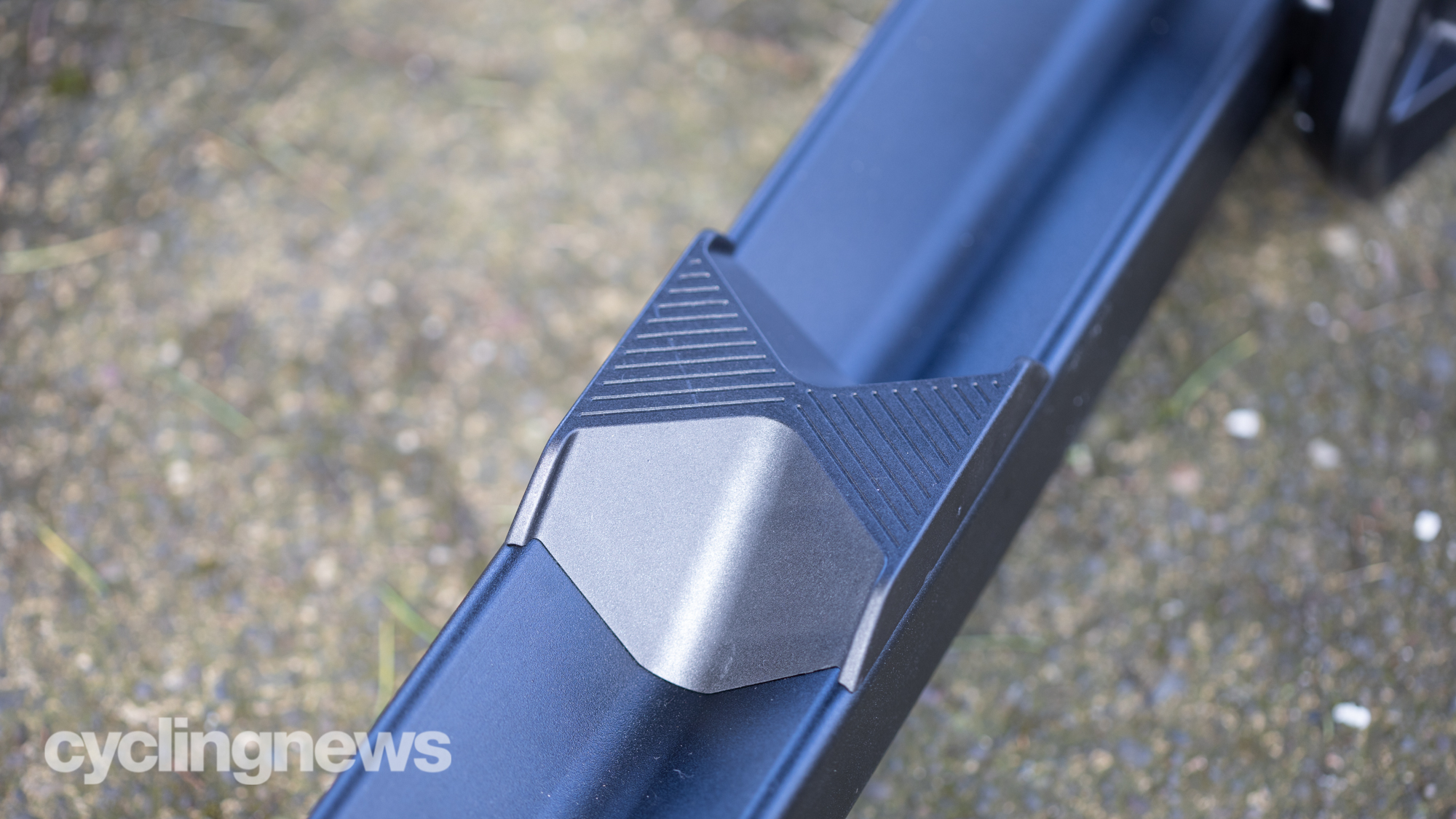
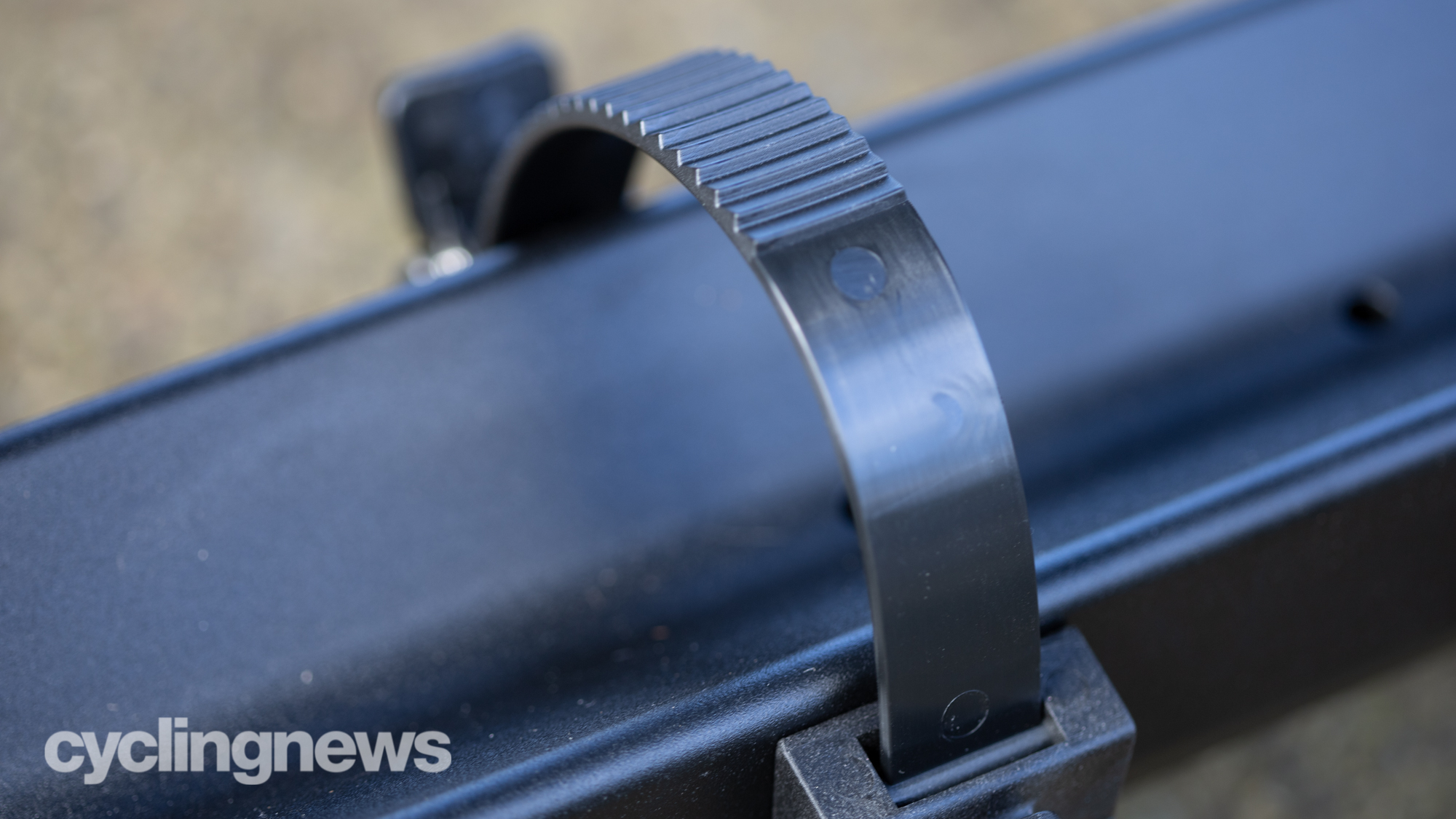
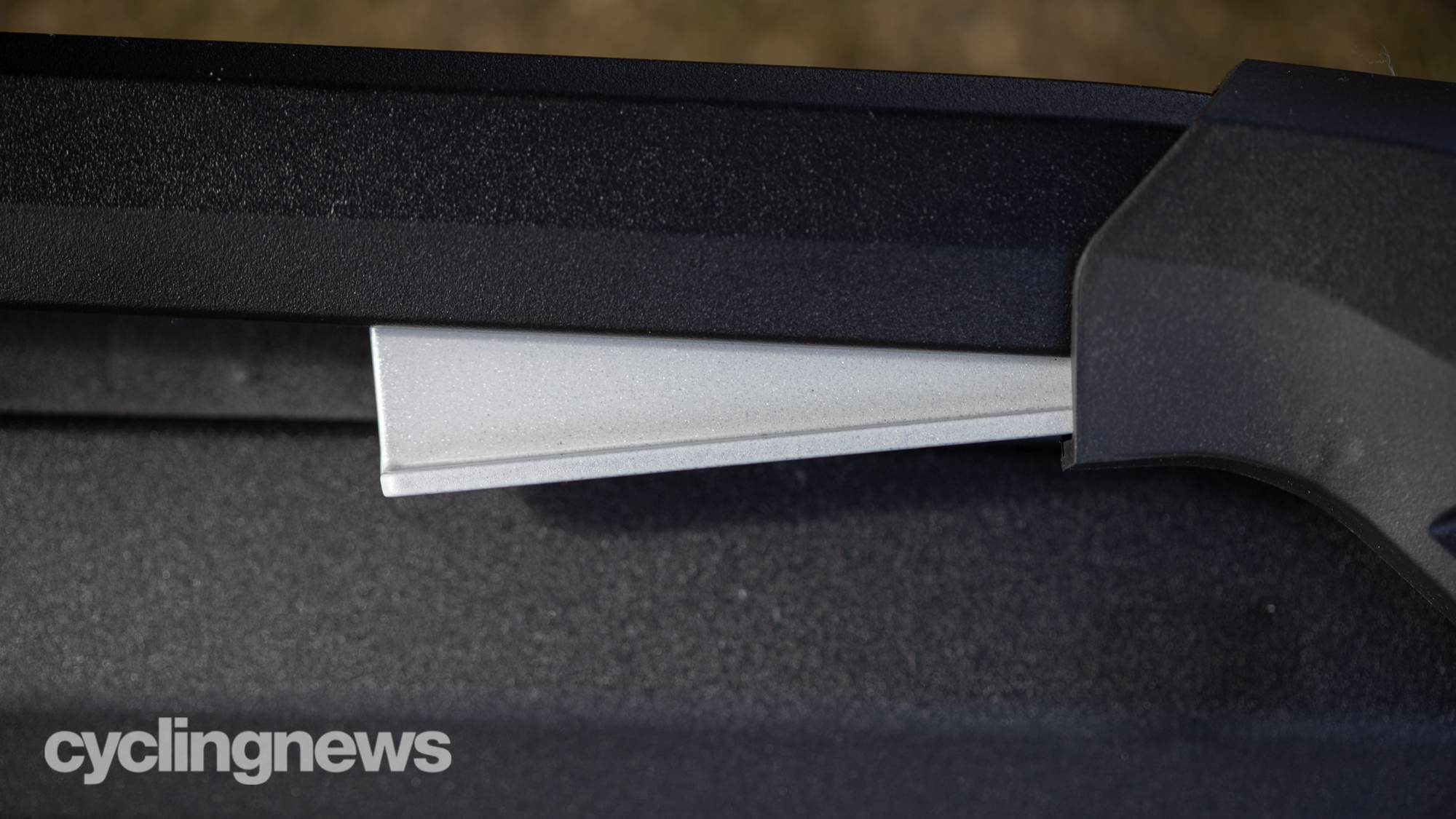
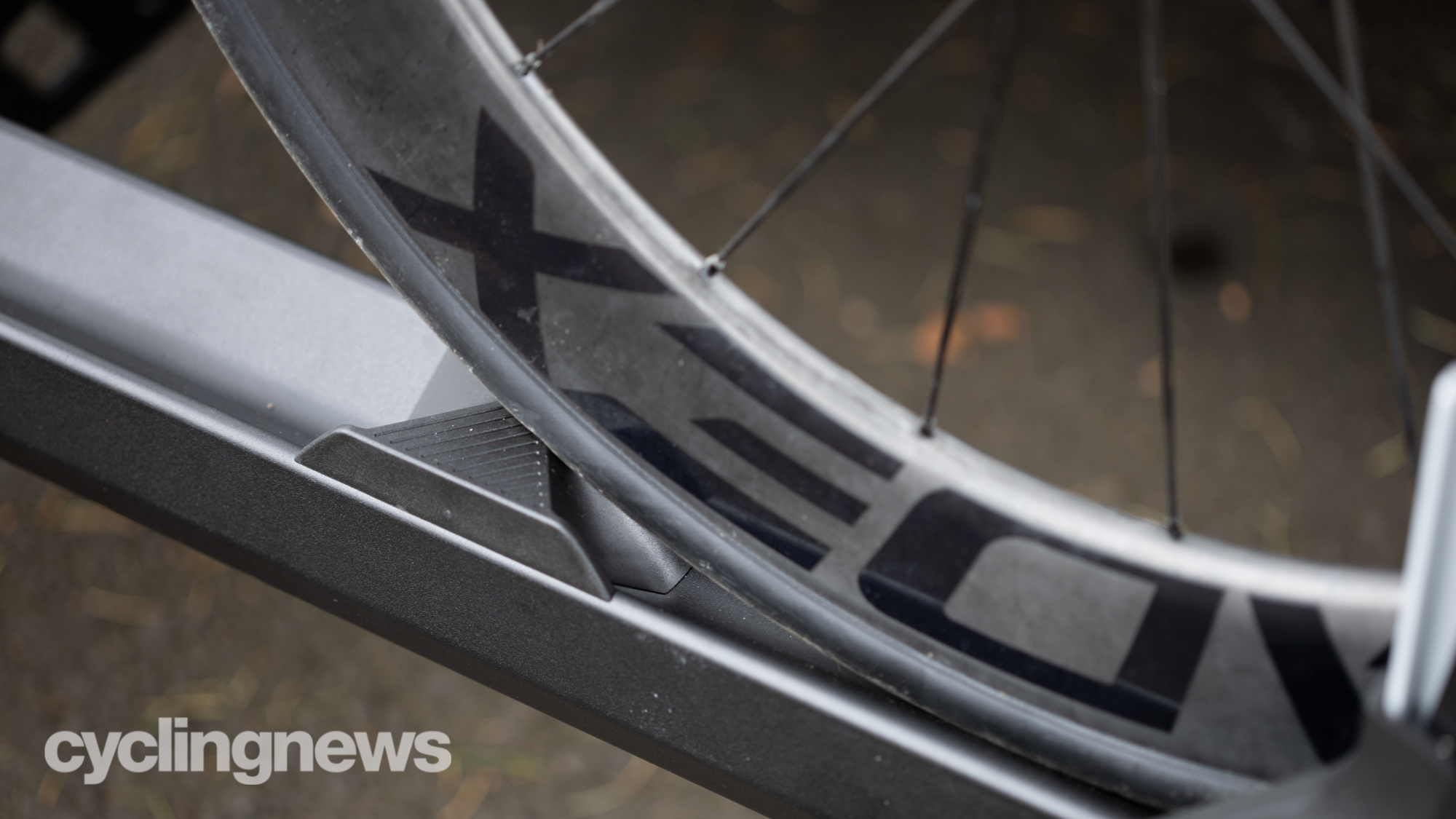

I can't imagine you'd actually need the backup though. There's a system in the hitch called "Hitch Tighter" as you screw the bolt into the receiver it expands inside the receiver. It creates a rock-solid connection that doesn’t move while driving. Then for the bike itself, bring the arms up until they are tight. The wheel strap is extra safety but the arms oppose each other and the whole system is very secure.
The other part of using a bike rack is what happens with it when there's not a bike on it. Some racks, like the Kuat NV 2.0, lend themselves to a life lived attached to the car. Other racks are light enough that it's easy to remove and reattach as necessary. The Rockymounts Monorail solo falls into that category. With the Saris MHS, you've got a hybrid approach.
The bike trays are longer than most racks because they extend past each end of the bike. Removing the whole rack while leaving them attached isn't easy. The base hitch system is also pretty heavy. During my time with the system, what I found made the most sense was leaving the base hitch on the car but removing the bike tray unless I was using it.
Leaving the base on the car is very manageable. It's small and the grab handle that allows angling is easy to use. If it's in your way you can angle it all the way down to the ground. This works with bike trays installed also. There's a lock for the hitch pin, along with extra lock cores included for adding to future pieces, and even if stolen, you'd be out less than a full rack. The bike trays on their own are light and easy to carry even though they are long.
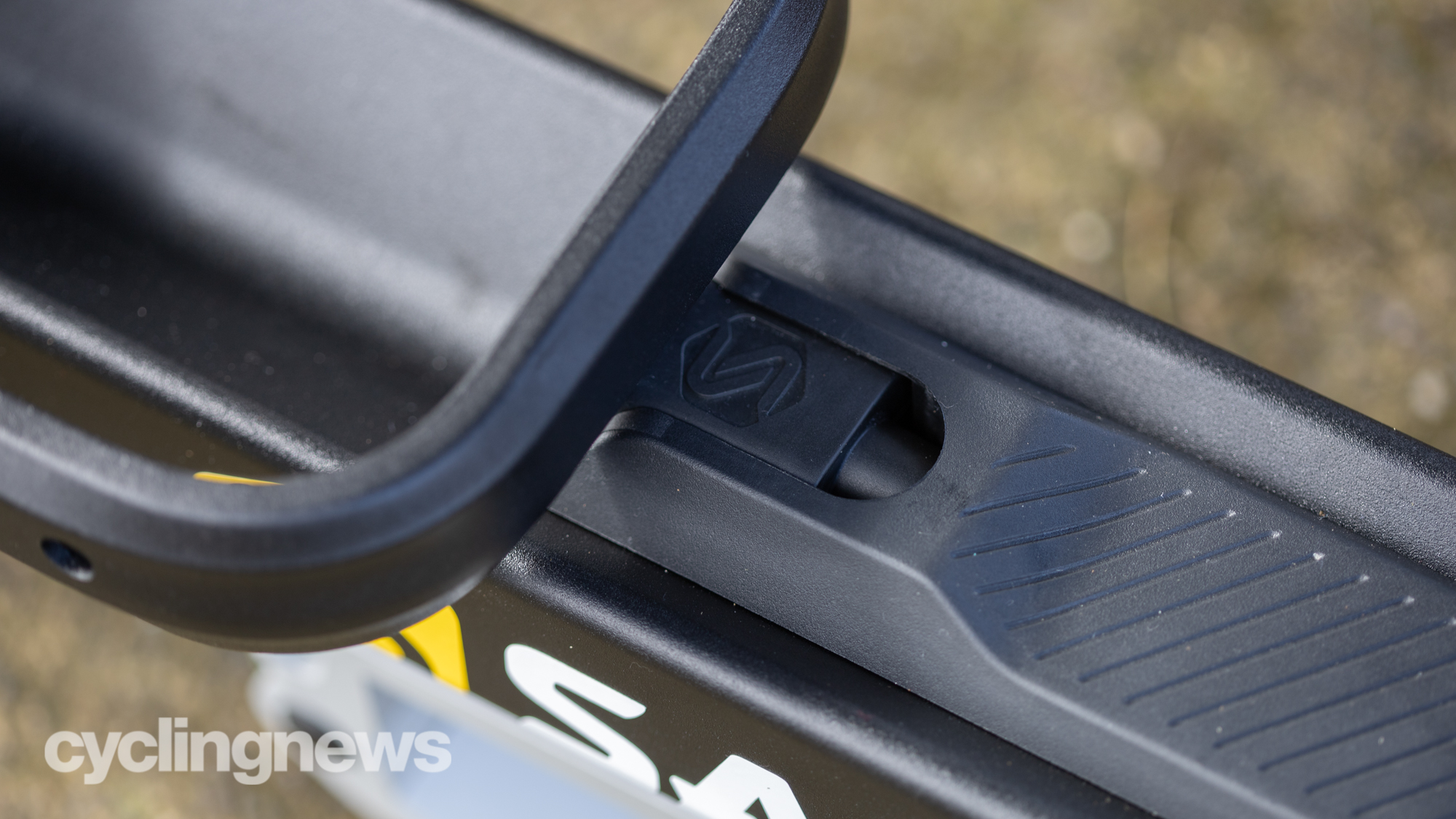
Verdict
The idea of the Saris Modular Hitch System is to replace a roof mounted rack system with a hitch system. The system is perfect for anyone with a larger vehicle that can take the weight but has a tall roof that’s hard to access. It would also be a good idea for anyone with an open bed pickup who doesn’t want to fill the bed with the bikes. This concept is something Yakima is also exploring with the Exo Foundation but if you’ve got a class 2 hitch, that product won’t work and even if you’ve got the right hitch, it is more expensive.
Unfortunately, not everything that's part of the Saris vision is available today. Right now, what is available is a premium bike rack. It's a rack design that shows up in other products but Saris does a good job with it. Bikes are secure and easy to mount. Looking at it as only a bike rack, the Saris version of the design also carries more weight, you can add more bikes, and there's compatibility out of the box with a larger tyre.
Tech Specs: Saris Modular Hitch System (MHS)
- Price: MHS 1+1 base and MHS 2+1 $199.99, MHS 3+1 $249.99, MHS Duo 1 bike tray $349.99, MHS Duo 1 bike add-on tray $349.99
- Carry capacity: MHS 1+1 base - Carries 1 bike, up to 60 lbs & 1 bike up to 35 lbs with correct trays. MHS 2+1 base - Carries 2 bikes, up to 60 lbs & 1 bike up to 35 lbs with correct trays. MHS 3+1 base - Carries 2 bikes, up to 60 lbs & 2 bikes up to 35 lbs with correct trays.
- Hitch sizes available: 1.25in or 2-inch
- Rack weight: MHS 1+1 Base - 25.4lbs, MHS Duo tray - 24 lbs
- Max wheelbase: 53 inches
- Max tyre width: Tool-free, adjustable wheel block accommodates wheel sizes from 20 to 29 inches, and tire sizes as wide as 5 inches.
- Accessories: Includes locking hitch bolt, cable lock, and standard lock pods, keyed alike
Josh hails from the Pacific Northwest of the United States but would prefer riding through the desert than the rain. He will happily talk for hours about the minutiae of cycling tech but also has an understanding that most people just want things to work. He is a road cyclist at heart and doesn't care much if those roads are paved, dirt, or digital. Although he rarely races, if you ask him to ride from sunrise to sunset the answer will be yes. Height: 5'9" Weight: 140 lb. Rides: Salsa Warbird, Cannondale CAAD9, Enve Melee, Look 795 Blade RS, Priority Continuum Onyx

